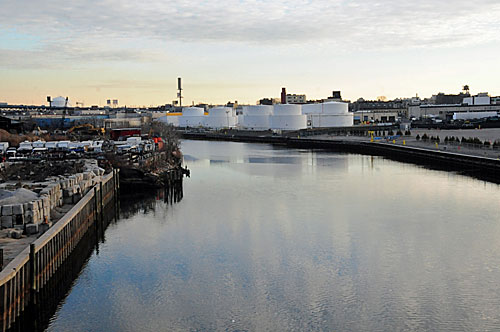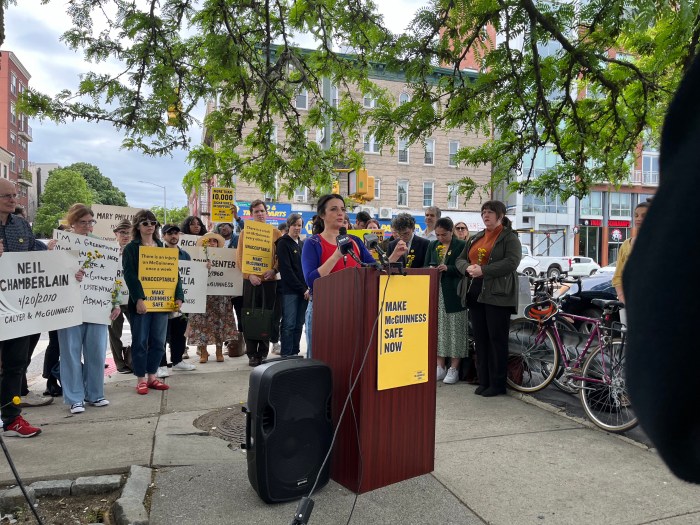The city may install a kinder, gentler incinerator along the Newtown Creek — but Greenpoint residents say they’re the ones who would get burned.
The Department of Sanitation will evaluate proposals for a new facility that will convert 900 tons of solid waste per day into energy at nine possible locations in the city, including the National Grid site off Varick Avenue.
The plant would use new technologies, such as anaerobic digestion, gasification, and hydrolysis — techniques Mayor Bloomberg touted as cutting edge in the waste-to-power game — to turn trash into energy instead of simply lighting the garbage on fire and then chucking it into a landfill.
“Using less and recycling more are the most effective ways to address the problem, but this project will help us determine if some of that waste can be converted to safe, clean energy to meet the city’s growing power needs,” Bloomberg said.
A sanitation spokeswoman insists the new facility is “not an incinerator” and would not use conventional “mass burn” techniques, but environmental advocates warn that most of the methods — which turn garbage into a gas and then ignite the vapor — still release toxic byproducts into the air and should not be used in densely populated areas.
“It’s still an incinerator — you could put lipstick on a pig and it’s still a pig,” said Michael Heimbinder of the environmental mapping group, Habitat Maps. “This is not a solution to our garbage issue.”
The proposal arose from the city’s efforts to double the rate of waste diverted from landfills from 15 percent to 30 percent, starting in 2006.
City facilities handle 10,000 tons of garbage per day and nearly three million tons per year — about 40 percent of which gets processed in transfer stations in Greenpoint and Williamsburg. That’s far too much according to neighborhood activists, who say the last thing North Brooklyn needs is another waste transfer station.
“It’s good that the mayor is looking at different ways to handle the city’s waste, but we’re concerned about this,” said Greenpoint resident Laura Hofmann, whose activist group, OUTRAGE, sent a letter to Mayor Bloomberg last month along with 30 other environmental organizations to protest the proposal. “An incinerator would further jeopardize the air quality. Between an increase in waste truck traffic and rising asthma rates, this could affect our health.”
Neighborhood residents have stopped incinerators in North Brooklyn in the past, most famously stymieing former Mayor Koch’s plan in 1981 to add an incinerator in the Brooklyn Navy Yard.
But the new site would be much closer to Greenpoint residents — National Grid’s land is only a few blocks from a large public housing complex and scores of other homes.
And the city is also considering locating the facility at the Phelps Dodge plot, just across from Greenpoint in Queens. Both plots of land are currently considered state Superfund sites, and are being eyed by federal environmental investigators for polluting Newtown Creek.
Instead of constructing the trash-to-power plant, Heimbinder argues the city should build marine transfer stations, which would remove garbage via the city’s waterways, or expand anaerobic gas facilities.
“This is not a clean technology, it is not better for the environment, and it is not cost-effective,” said Heimbinder. “This is mind-boggling!”
The city says proposals for the site are due on June 5.























